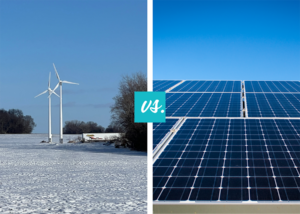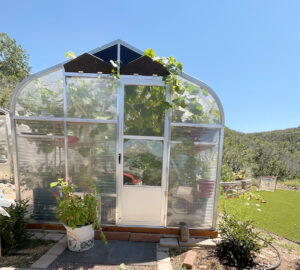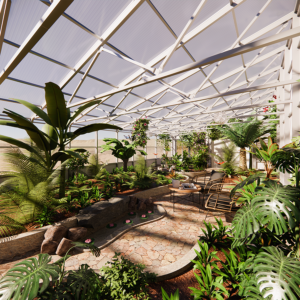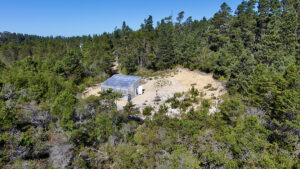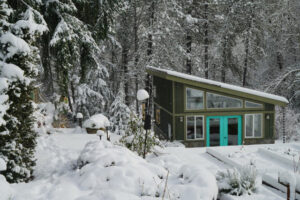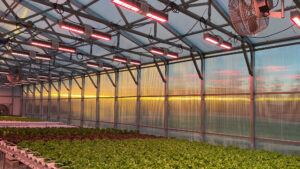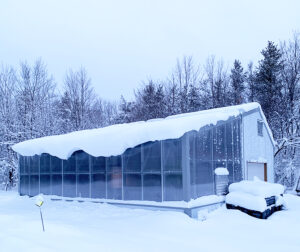*While there is useful information in this blog, we no longer supply Phase Change Material, nor do we design our facilities with this material.
The Phase Change Material has been up for a few weeks now and is keeping the greenhouse about 20 degrees warmer than the minimum outside temp. Without the PCM, the greenhouse was about 10 degrees warmer. As of today [Nov 17th] I am still getting lots of tomatoes, cucumbers and bell peppers. My Myer’s lemon tree has lots of lemons and a second flush of blossoms just started. I still get all kinds of greens, I’ve gotten them non-stop since last March.” ~Sharon on her year-round 12 x 16 Ceres Greenhouse

Want to get a little more out of your greenhouse this season? Or build a year-round greenhouse completely heated by solar energy? Then you should know about a slightly geeky material called Phase Change Material.
Phase Change Material (or PCM) passively heats the greenhouse using the latent heat fusion (we’ll get into that below). In short, it naturally absorbs solar energy during the day and re-releases that heat at night, keeping the greenhouse much warmer on bitterly cold winter nights. It can be easily added to any greenhouse, new or existing, allowing you to bring more fresh food to your table this holiday season… a time when “fresh” is very hard to find.
So how does it work? Phase Change Material takes advantage of the energy transfer that occurs during phase changes. Whenever a material changes phases – from solid to liquid to gas – there is a huge energy transfer as molecules must fuse together or break apart. As PCM melts from a solid to a liquid during the day, it absorbs heat from the greenhouse, called the latent heat of fusion. At night, the material re-solidifies (or ‘freezes’) and releases this energy back into the greenhouse, passively adding heat.
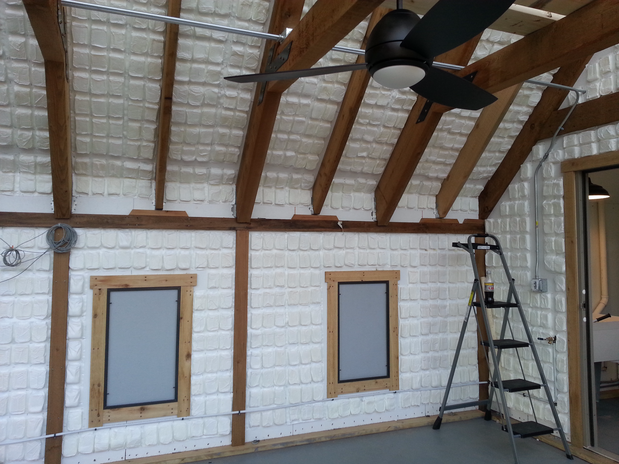
You may have heard of people using water in this way, as thermal mass or a heat sink. PCM follows the same concept, but has a much greater effect. It has about 5 times the heat storage capacity as water, because it uses the physics of latent heat.
If you’re skeptical about how this works, keep in mind that this same premise is behind a multitude of everyday products. It’s what causes evaporative coolers and heat pipes to work. It’s also what is keeping your refrigerator cool right now.
So what can it do for the greenhouse?
Phase Change Material heats the greenhouse, passively and for free through the winter. It naturally evens out temperature swings, particularly in the spring and fall, reducing stress on the plants. Overall, it makes the greenhouse a much more energy-efficient structure. That means lower energy costs, and more year-round growing.
Unlike water, which melts and freezes at 32F, Phase Change Material reacts at warmer temperatures. At Ceres, we integrate PCM into a range of greenhouses, in both hot and cold climates. We tailor the product to match the expected temperatures of the greenhouse, so the PCM can take effect every day.
Phase Change Material is easily shipped and can be installed by anyone. The product comes in rolls of 4’ x 8’ sheets that can be nailed to a wall. And what’s even better… It’s out of the way. Unlike water, which is bulky and hard to integrate into the greenhouse, PCM can be built into the wall, on the wall, or added to any surface that gets some direct sun. Because it doesn’t require electricity, and has a large heat storage capacity, PCM is a particularly good fit for passive solar greenhouses.
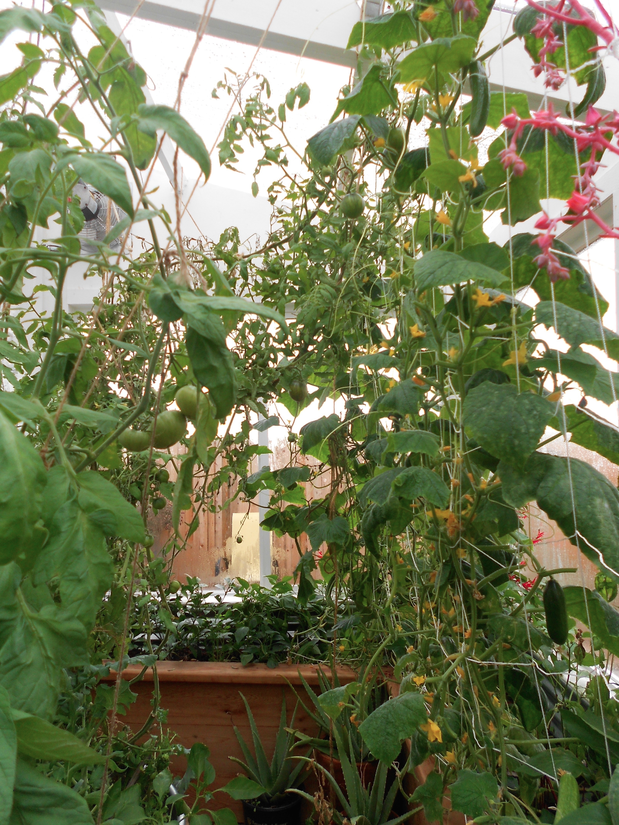
Growers in very cold and cloudy climates (like the Northeast or parts of the Midwest) may want to investigate seasonal heat storage with a Ground to Air Heat Transfer (GAHT®) system. These use the immense thermal mass of the soil underground to store heat over long periods. The system stores excess heat in the soil during the summer and slowly draws it back out as needed through the winter. It’s another way to make the greenhouse immensely more energy-efficient, taking advantage of the free energy of the sun and the thermal mass of the soil underground.
Every greenhouse is different, and as always, we want to hear from you about finding the best solution for your needs. We’re here to help make your greenhouse the most energy-efficient, productive year-round growing environment possible.

